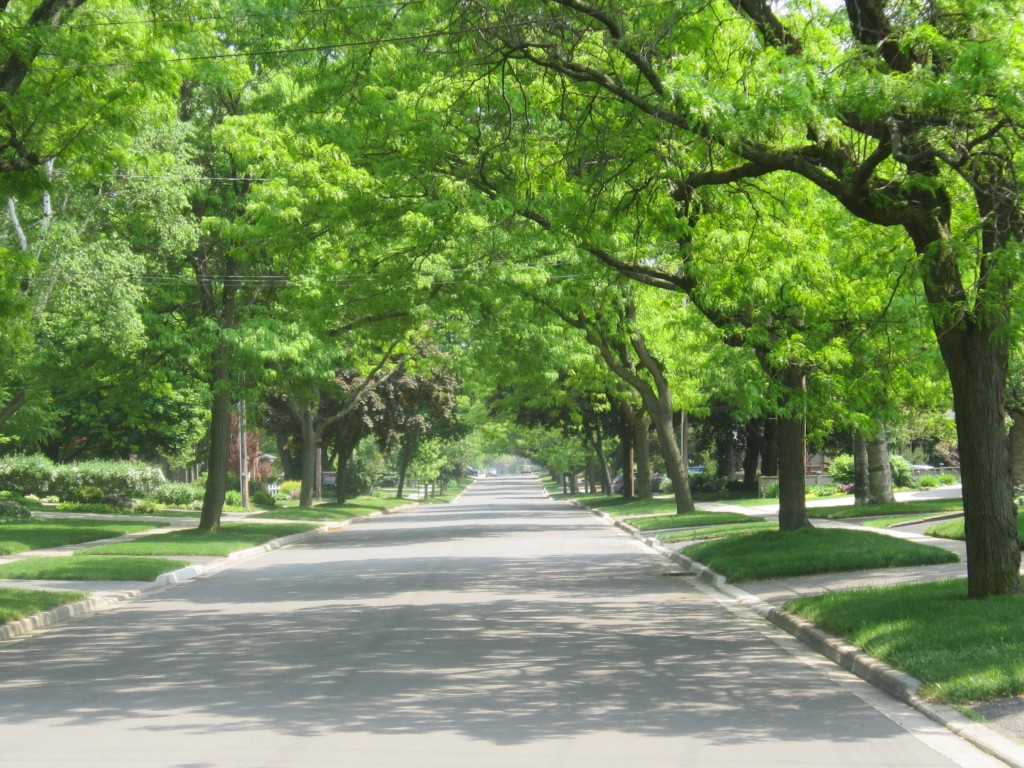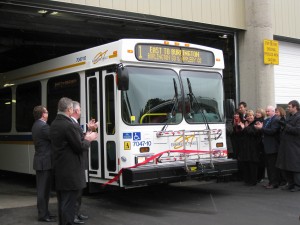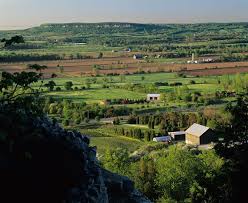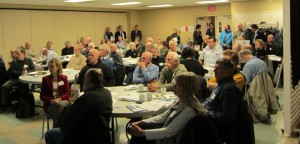January 12, 2016
BURLINGTON, ON
BurlingtonGreen put its two cents on the table and gave city council and senior staff its views on the Strategic Plan that is currently out for public review.
They made several significant points: One being that there wasn’t enough focus climate change and they wondered why there was a long term vision but not much in the way of a four year, single term of office document. Burlington Green isn’t the only group asking that question.
Burlington Green’s Executive Director Amy Schnurr points to “the extensive community feedback” they received through their Greenprint for the Future outreach program where they learned what the citizens of Burlington had to say about a variety of local environmental issues.
“Both globally and locally, the health of the environment and need for effective, results-oriented action to ensure a sustainable future has never been more important. Municipalities have an essential role to play in combating climate change and must prioritize and integrate associated action strategies into short and long-term planning. Additionally, with Burlington currently facing the conflicting challenges of build-out and population growth, the associated issues of intensification, infill practices, habitat destruction, local food security, waste management and effective transportation, combine to make sustainable planning a top priority.”
BurlingtonGreen strongly believes that climate change and the environment must be central to Burlington’s vision and planning going forward and respectfully offers the following input to aid the City in improving the draft Strategic Plan for 2015 to 2040.
Issue: Strategic Plan versus Long Term Vision: we feel the current document represents a strategic vision, rather than a plan which requires specific, measurable time-bound strategies.
Recommendation: Re position the document as “Burlington’s Vision for 2015 to 2040”and develop a five year Strategic Plan in consultation with the community, to implement the short and long term elements of the vision.
Issue: The Vision Statement “Where people, nature, and business thrive” is missing the element of community context.
Recommendation: Include the word “community”, so that the vision statement reads: “Where people, nature, business, and community thrive”.
Issue: Climate Change: the document makes no reference to this, the most important environmental and social issue of our times, and though some elements, such as the City’s carbon-neutral proposal, address it in part, there is no cohesive or strongly-stated strategy articulated. Cities must be on the front line of action in dealing with climate change, and Burlington needs to demonstrate clear leadership here.
Recommendation: Add a fifth section to the plan dedicated to climate change because strategies dealing with climate change must include or involve all sections of the plan: not just health and environment, but also transportation and economic development and the type of growth we want to have and can sustain in the next twenty five years.
If it is deemed that an additional section cannot be added then all document sections should be strengthened significantly to integrate climate change mitigation and adaptation planning strategies.
Issue: A City that Grows: we support the thrust towards intensification and smart growth; however, there is insufficient recognition of the need to develop and preserve a livable and environmentally sustainable community, while promoting economic growth.
Smart growth must advance strategic plans that respect nature’s biodiversity and our irreplaceable green spaces that Burlington is fortunate to have. This additional point is not only important for Burlington citizens, but is fundamental to promoting economic growth in a postmodern information economy.
Reccomendation: Strengthen this section to clearly indicate that the vision is to absorb growth in the currently defined urban areas to support an economically strong, livable and environmentally sustainable community.
Issue: A City that Moves: we strongly believe that a much greater focus on public transit and active transportation is required in the draft plan.
Recommendation: Make Public Transit and Active Transportation priorities by creating a dedicated section specifically dealing with “public transit” and “active transportation options”, in coordination with the Region of Halton’s recently published Active Transportation Master Plan, and where necessary, work proactively with the Region to suggest any improvements to the Plan that are needed to meet Burlington’s specific requirements.
Issue: A Healthy and Greener City: we find this section represents a fairly traditional approach to environment and more innovative and integrative thinking and strategies, with a strong focus on Climate Change are required.

Tree canopies like this take decades to mature – is there a plan in place to replace these trees when they begin to fail? It is streets like this that give Burlington much of its character and value.
Recommendation: Review this section approaching urban and growth issues from an environmental point of view, and ensure the inclusion of important issues such as:
• Green Space: include strategies for green space growth and preservation for its carbon sink capacity and quality of life and health benefits.
A comprehensive (city and privately owned) green space inventory and acquisition plan is required to support this;
• Tree Canopy: include strategies to protect and strengthen our tree canopy to meet Environment Canada’s community sustainability standards.
One example includes the establishment of a practical, effective private property tree bylaw given that the majority of our tree canopy is located on privately owned lands.
• Habitat & Biodiversity Protection: A balanced approach to development planning is essential to ensure the city’s natural areas are preserved and habitat restoration work is advanced to ensure local biodiversity is protected and enhanced.
• Waste Reduction: include municipal and community strategies to support the Region and Province to meet waste reduction goals. Advancement of the city’s green procurement strategies and establishing local targets, incentives and requirements for all events and festivals conducted on city property are a few examples.
• Energy: consider whether energy, being at the fulcrum of climate change, should be a distinct initiative in this section and perhaps whether the section might be renamed Environment and Energy. Include forward looking strategies such as developing community energy systems(s) by engaging industry experts and committing to community energy infrastructure development.
The test for feasibility should not be limited to existing business and geopolitical measures but should include forward looking plans that anticipate changes in support of combatting climate change.
• Farmland/Source Water Protection: include strategies that will strengthen the protection of our vital agricultural sector and water resources such as adopting a Food & Water First policy.
Issue: A Healthy and Greener City: we find this section represents a fairly traditional approach to environment and more innovative and integrative thinking and strategies, with a strong focus on Climate Change are required.
Recommendation: Review this section approaching urban and growth issues from an environmental point of view, and ensure the inclusion of important issues such as:
• Green Space: include strategies for green space growth and preservation for its carbon sink capacity and quality of life and health benefits.
A comprehensive (city and privately owned) green space inventory and acquisition plan is required to support this;
• Tree Canopy: include strategies to protect and strengthen our tree canopy to meet Environment Canada’s community sustainability standards.
One example includes the establishment of a practical, effective private property tree bylaw given that the majority of our tree canopy is located on privately owned lands.
• Habitat & Biodiversity Protection: A balanced approach to development planning is essential to ensure the city’s natural areas are preserved and habitat restoration work is advanced to ensure local biodiversity is protected and enhanced.
• Waste Reduction: include municipal and community strategies to support the Region and Province to meet waste reduction goals. Advancement of the city’s green procurement strategies and establishing local targets, incentives and requirements for all events and festivals conducted on city property are a few examples.
• Energy: consider whether energy, being at the fulcrum of climate change, should be a distinct initiative in this section and perhaps whether the section might be renamed Environment and Energy. Include forward looking strategies such as developing community energy systems(s) by engaging industry experts and committing to community energy infrastructure development.
The test for feasibility should not be limited to existing business and geopolitical measures but should include forward looking plans that anticipate changes in support of combatting climate change.
• Farmland/Source Water Protection: include strategies that will strengthen the protection of our vital agricultural sector and water resources such as adopting a Food & Water First policy.
Issue:
An Engaging City: we generally support what is here, however as a Blue Dot community, Burlington needs to step up to the commitment and advance a plan to stimulate citizen engagement specifically in regards to growth and environmental issues.
Recommendation: Advance plans to stimulate meaningful citizen engagement with respect to growth and environmental issues.
Burlington Green has been consistent with its plea that the public be listened to and heard. They argue that the City’s Strategic Plan for 2015-2040 “must reflect this commitment; they hope the constructive input and recommendations provided make it into the final document.






















Great work Burlington Green! I sincerely hope your comments are added to the city’s strategic plan.
Good work Burlington Green. Burlington has a great tree canopy when viewed from the Escarpment. I’d love to see a private tree bylaw that would offer some means of protection of this canopy from developer clear-cutting. Trees are the lungs of our planet.
I’d like to see better public transportation planning too. Too many large near-empty buses on secondary road routes during slow times of the day. These periods and routes call for smaller, fuel-efficient buses. This means more investment in buses, not in kilometres travelled or drivers required. Just smarter planning.
Looks like we elected the wrong people. Where is this depth of thought from Council?
Kudos to Burlington Green for their thoughtful, inclusive approach.
Thank you to BurlingtonGreen’s volunteer Advocacy Team for their thoughtful review of the City’s Draft Strategic Plan and for their preparation of BurlingtonGreen’s submission of input to the City.
Sincerely,
Amy Schnurr
Executive Director